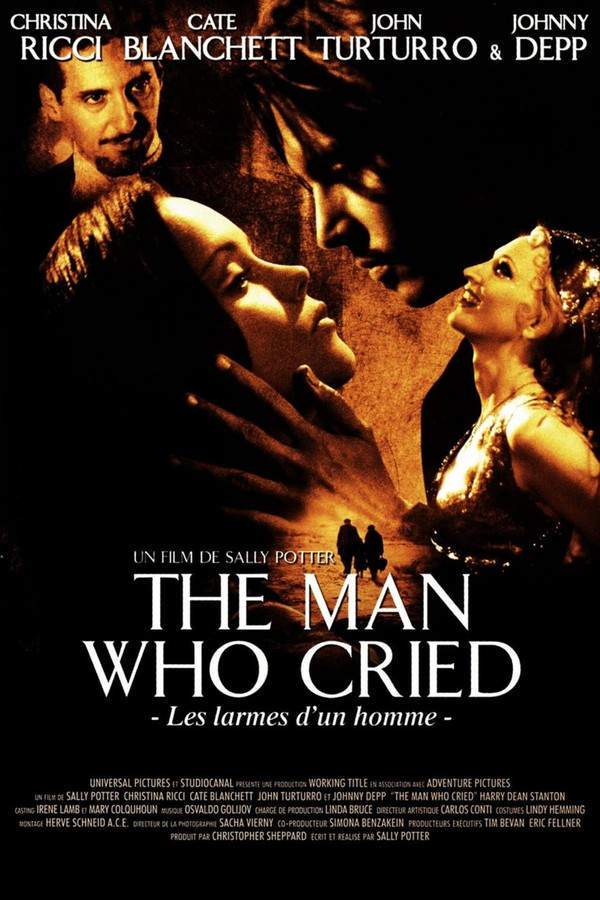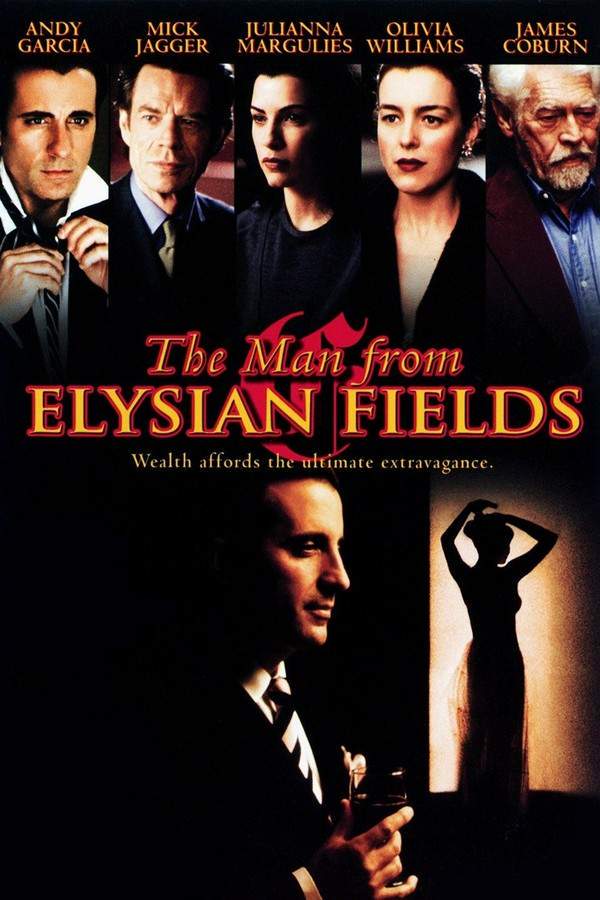
The Man Who Cried
Year: 1993
Runtime: 180 mins
Language: English
Director: Michael Whyte
Abel Mason is trapped in a loveless marriage to a harsh, domineering wife who constantly berates him and physically abuses their son Dick. When the woman he truly loves is killed by her husband after Mason’s wife sends a letter exposing the affair, Abel abandons his wife, takes his son, and sets out on the road.
Warning: spoilers below!
Haven’t seen The Man Who Cried yet? This summary contains major spoilers. Bookmark the page, watch the movie, and come back for the full breakdown. If you're ready, scroll on and relive the story!
The Man Who Cried (1993) – Full Plot Summary & Ending Explained
Read the complete plot breakdown of The Man Who Cried (1993), including all key story events, major twists, and the ending explained in detail. Discover what really happened—and what it all means.
Fegele Abramovich (Christina Ricci) is a young Russian Jewish girl who experiences a series of heartbreaking events beginning in 1927. Her father, Oleg Yankovsky, leaves their village in Russia to seek his fortune in America, promising to send for Fegele and her grandmother. Before his departure, he comforts her by singing the beautiful aria “Je Crois Entendre Encore” from Bizet’s Les pêcheurs de perles. Tragically, shortly after her father leaves, their village is attacked and burned during a pogrom, forcing Fegele to escape with her neighbors. Despite facing numerous dangers, she manages to board a boat bound for Britain, carrying only a photograph of her father and a coin given by her grandmother for luck.
Upon arriving in Britain, an official renames her “Susan” and places her into foster care. At school, she encounters hostility from English students who tease her by calling her a “gypsy,” mainly because she does not yet understand English. Her situation begins to improve when a compassionate teacher overhears her singing “Je Crois Entendre Encore” in Yiddish and takes it upon herself to teach Susan English and help her sing in her new language.
As the years pass, Susan, or Suzie as she is called, auditions for a singing and dance troupe headed to Paris. During her time in France, she befriends Lola (Cate Blanchett), an older Russian dancer, and they share an apartment as friends. Their journey leads them to perform at a formal event alongside a mysterious Romani performer, Cesar (Johnny Depp), a talented horseman who captivates Suzie with his charm. Their captivating performance in front of an audience is followed by an intimate moment where they overhear a tenor inside singing “Je Crois Entendre Encore.” The voice belongs to Dante (John Turturro), an Italian opera singer who immediately draws Lola’s attention with his rich voice and charisma. Lola becomes enamored with Dante, attracted not only by his talent but also by his wealth and success.
Throughout this period, Suzie is introduced to Dante’s complicated personality. Dante, an ardent supporter of Mussolini, begins a romantic relationship with Lola while maintaining a distant, sometimes cold attitude toward Suzie. Meanwhile, Cesar introduces Suzie to his close-knit Romani “family,” and the young girl falls in love with the tribe and their lifestyle.
Trouble arises when Dante, after a brief encounter with Lola, discovers Suzie’s Jewish background after finding her father’s photo. An elderly neighbor, Madame Goldstein (Miriam Karlin), warns Suzie of the rising dangers posed by the Nazis as they invade Poland. As the German forces approach Paris, chaos erupts, and many Jewish artists and residents attempt to escape. The entertainment scene dwindles, leaving only Dante and Suzie as the remaining cast members. When Dante tries to seduce Suzie, she stands her ground and rejects his advances, especially after he lashes out at her for her heritage and her relationship with Cesar, whom Dante scorns because of his Romani roots.
The tension escalates when Dante reveals to a Nazi officer that Suzie is Jewish, a revelation that puts her in immediate danger. Lola, overhearing this, warns Suzie and urges her to flee Paris to save her life. Lola herself is preparing to leave, having bought tickets for herself and Suzie on a boat bound for America. In the midst of her escape, Suzie witnesses a horrifying event—the Nazi attack on the Romani village that results in the death of a child. Cesar comes to say goodbye, and Suzie desperately wishes to stay and help him fight the Nazis, but Cesar insists she must leave to find her father. They share a heartfelt farewell, knowing their paths are diverging.
Their journey across the Atlantic takes a tragic turn when the ship is torpedoed during the voyage. Lola perishes in the sinking, leaving Suzie among the survivors rescued and brought to New York. In the United States, Suzie embarks on a quest to find her father, only to discover that he has changed his name, given up singing, and moved west after believing his family was lost during the attack on their village. She eventually finds him in Hollywood, where he has built a new life as a studio head. She learns he has a new family and is gravely ill.
In a poignant reunion, Suzie visits her father in the hospital, walking past his new wife and children to see him. Recognizing her, he is overwhelmed with emotion, and she sits by his side, singing “Je Crois Entendre Encore” in Yiddish once more. As tears stream down his face, he expresses his joy and recognition, filling the scene with a profound sense of loss, hope, and reconciliation.
This story is a powerful portrayal of resilience, love, and the enduring strength of heritage through one girl’s journey from the horrors of pogroms and war to finding hope and family in a new land.
Last Updated: August 19, 2025 at 05:16
Unlock the Full Story of The Man Who Cried
Don't stop at just watching — explore The Man Who Cried in full detail. From the complete plot summary and scene-by-scene timeline to character breakdowns, thematic analysis, and a deep dive into the ending — every page helps you truly understand what The Man Who Cried is all about. Plus, discover what's next after the movie.
The Man Who Cried Timeline
Track the full timeline of The Man Who Cried with every major event arranged chronologically. Perfect for decoding non-linear storytelling, flashbacks, or parallel narratives with a clear scene-by-scene breakdown.

Characters, Settings & Themes in The Man Who Cried
Discover the characters, locations, and core themes that shape The Man Who Cried. Get insights into symbolic elements, setting significance, and deeper narrative meaning — ideal for thematic analysis and movie breakdowns.

Similar Movies to The Man Who Cried
Discover movies like The Man Who Cried that share similar genres, themes, and storytelling elements. Whether you’re drawn to the atmosphere, character arcs, or plot structure, these curated recommendations will help you explore more films you’ll love.
Explore More About Movie The Man Who Cried
The Man Who Cried (1993) Scene-by-Scene Movie Timeline
The Man Who Cried (1993) Movie Characters, Themes & Settings
The Man Who Cried (1993) Spoiler-Free Summary & Key Flow
Movies Like The Man Who Cried – Similar Titles You’ll Enjoy
The Man Who Cried (2001) Spoiler-Packed Plot Recap
The Man from Elysian Fields (2002) Movie Recap & Themes
The Cry (1000) Spoiler-Packed Plot Recap
The Art of Crying (2006) Full Movie Breakdown
A Real Man (1983) Movie Recap & Themes
The Man Who Loved Women (1983) Plot Summary & Ending Explained
My Man and I (1952) Complete Plot Breakdown
Man to Man (1992) Complete Plot Breakdown
The Man Who Loved Women (1977) Full Movie Breakdown
A Sensitive, Passionate Man (1977) Full Movie Breakdown
Man and Wife (1923) Detailed Story Recap
The Old Man Who Cried Wolf (1970) Film Overview & Timeline
A Man Betrayed (1936) Movie Recap & Themes
The Man in the Attic (1995) Complete Plot Breakdown
Man to Man (1930) Plot Summary & Ending Explained

















